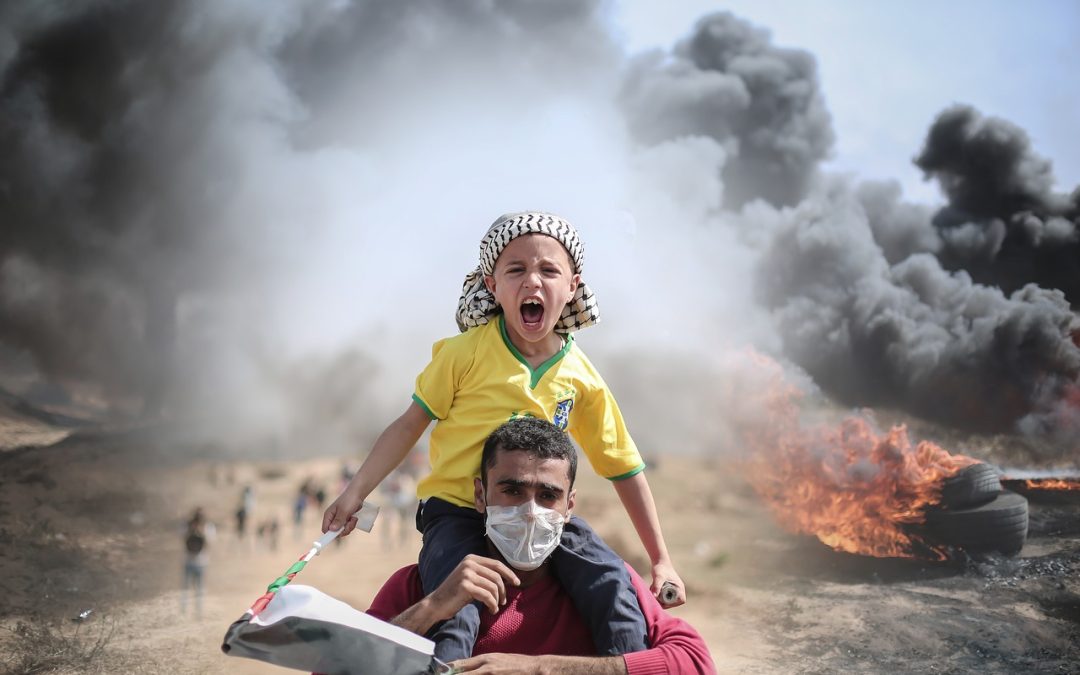The Israeli-Palestinian struggle remains one of the most tumultuous, traumatic conflicts of history.
Series of wars and ensuing agony have been circulating news for decades. The most recent war-cycle happened not too long ago – in May 2021, and it was deemed as some of the worst violence in the area since 2014 by the New York Times.
What happened this time?

- By May 2, 2021, Israel ordered six Palestinian families to leave their homes in Sheikh Jarrah to make room for Jewish settlers. These families have been living in this neighborhood for generations.
- The mandate ignited protests worldwide to show solidarity for the Palestinian people. On May 7th 2021, tens of thousands of Muslims sought the infamous Al-Aqsa mosque, Islam’s third holiest site, to pray on the last day of Ramadan. Here, protests against the Sheikh Jarrah evictions were also held.
- But to their dismay, protesters were met by rubber-coated bullets and grenades from Israeli military. They retaliated by throwing stones at the police.
- Days later, a flash raid on the Al-Aqsa village followed, with more rubber-coated bullets, tear gas, and bombs.
- Hamas responded by firing rockets towards Israeli territory.
After 11 days of bloodshed, Hamas fired, in total, 4,000 rockets towards Israel. Luckily, their Iron Dome missile defense system was able to intercept about 90% of the rockets, yet 12 innocent civilians, including two children, were killed, and hundreds were wounded.
Israeli soldiers killed, in total, 253 Palestinians, including 67 children, leaving about 2,000 wounded.
This is heartbreaking.
A ceasefire was announced on May 21st, 2021. The ceasefire, initiated by Egypt and encouraged by the US, halted the fighting.
Israeli civilians were able to arise from their protective bomb shelters, and Gazans had a breath to dig through the debris, gathering what was left of their belongings.
Some children were lucky enough to find their pets, but most were met with rubble.
Ever since we have seen less of the narrative on the news, but it is important to recognize that the trauma for people in the region still feels crisp. Their mental health struggles are ongoing.
What’s been going on since the ceasefire?
After the ceasefire was declared, Gazans had to first triage the damage. With over 1,000 residential sites destroyed, many families had no homes left. Other destroyed locations included schools, hospitals, and Gaza’s only COVID-19 testing laboratory.
Nearly two months after the ceasefire, 15-year-old Tareq Zbeideh was attacked by Israeli settlers. Zbeideh notes that he was tied to a tree, beaten with a belt, electrocuted, and worried he would not make it out alive. He now suffers from nightmares that his attackers will be back to arrest him.
This is but one of the stories of children still falling victim to brutality and trauma.
Who are our most vulnerable?

Gazan children have arguably been the most traumatized.
The average 15-year-old in Gaza has now lived through four major wars. This means that about one million teenagers have lost countless loved ones to bloodshed.
No one should have to suffer like this, but they do.
Due to the distress, children are left with persisting problems such as speech disorders, loss of appetite, and even consistent bed-wetting.
Randa Yousef, a civilian from Gaza, stated that their daughter used to “play and laugh,” but can now only muster cries and screams, fearing that any slight noise could be an airstrike.
Fadi Ali Abushammala, another Gaza resident, disclosed to NBC News that his two young sons used to paint as a distraction of violence. Lately, they have been only painting dead people.
To anyone slightly versed in the field of trauma, these stories may be symptoms indicative of post-traumatic stress disorder (PTSD). Yet experts believe that children cannot even be given the diagnosis of PTSD, because there is no “post-trauma” – the trauma, the lack of security and safety, is endless, ceasefire or not. Palestinians lost hope. They believe the status-quo of violence won’t change no matter what efforts are made.
Mental health is easily deprioritized when basic needs of food, water, and electricity take precedence (Al-Jazeera estimated over $100m to rebuild the industry, power, and agriculture).
We must reframe mental health as a basic need to be met – specifically when it comes to Gazan children.
So, what now?
There is an urgent need for mental health resources in Gaza. Various governmental and non-profit organizations have been rallying troops to help, even months after the ceasefire, but this is beyond their capacity.
In moments of helplessness, or in moments when things feel very politically driven, it is important to continue the dialogue surrounding the Gazan story.
Continue talking, not to forget those who died, but more importantly, to honor those still sifting through this trauma.
Social media to follow that highlights the Palestinian narrative:


